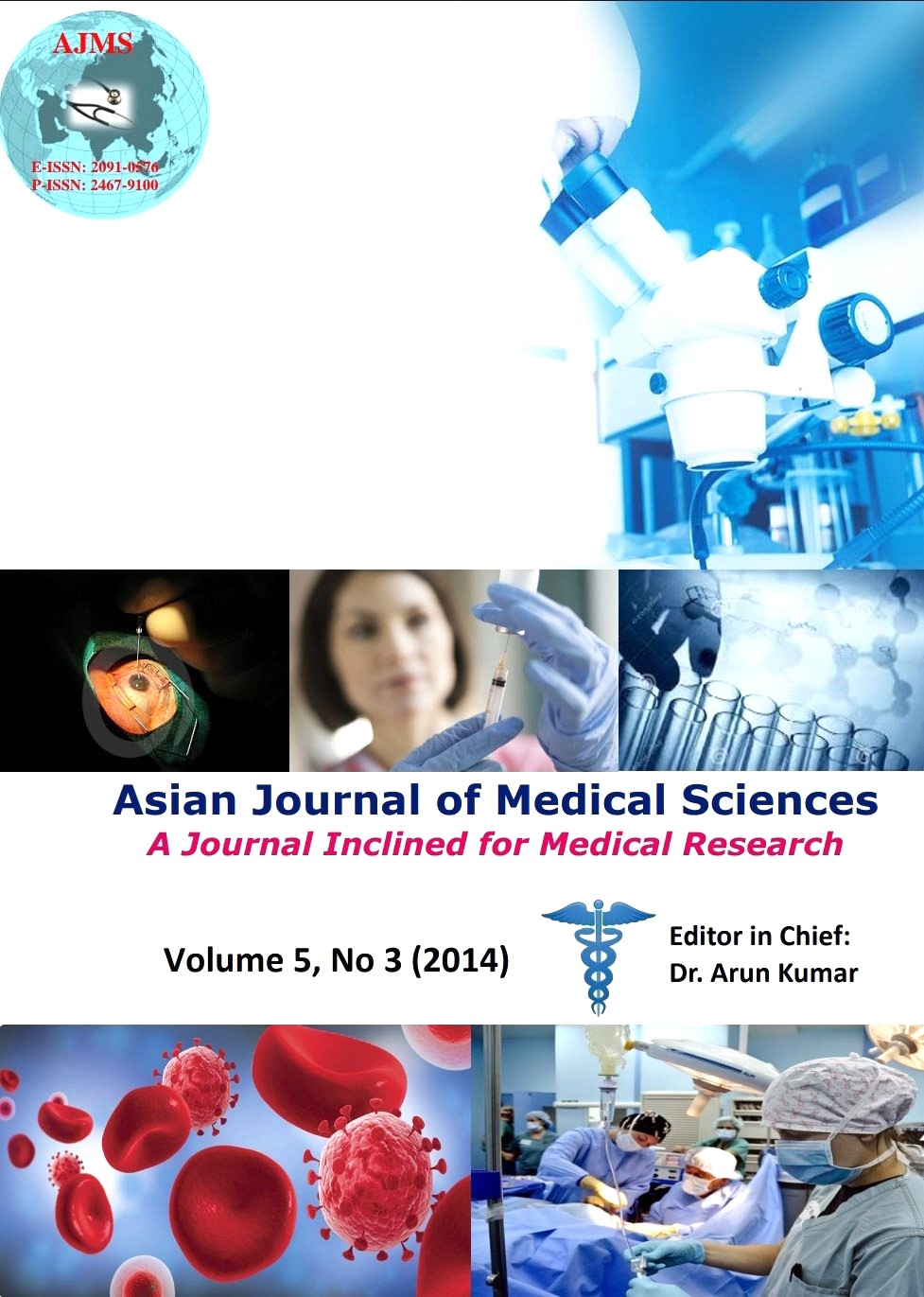A novel in vitro method to detect inhibitors of protein glycation
Keywords:
Protein glycation, AGE, glycation inhibitors, PAGE, Murraya koenigiiAbstract
Background: Protein glycation generates advanced glycation end products (AGEs) which are implicated in the pathogenesis of chronic complications associated with diabetes. Identifi cation of medicinal plants with protein glycation inhibitory potential will enhance the opportunity to delay or inhibit diabetic complications with minimum side effects. Techniques available to identify protein glycation inhibitors require expensive specialized equipment.
Objective: Objective of this study was to develop a relatively simple in vitro method to identify the protein glycation inhibitory potential of compounds or medicinal plants.
Methods: Bovine serum albumin (BSA) was incubated with different concentrations of glucose or fructose or ribose for 31 days at pH 7.4. Standard inhibitor aminoguanidine (AG) was used as a positive control. Effect on the BSA migration under different experimental conditions was compared using polyacrylamide gel electrophoresis under native conditions (PAGE). Murraya koenigii leaf extract was analyzed for its effect on protein glycation.
Results: We demonstrated many aspects of protein glycation including the effect of sugar concentration, type of the sugar and incubation period on protein glycation using this comparatively simpler method, which was previously, demonstrated using more sophisticated and expensive equipment. Migration of the BSA band towards the anode was proportionate to the degree of protein glycation. Further, we were innovative in demonstrating the inhibitory effect of AG on protein glycation using PAGE. BSA migration was comparatively slower when AG was included in the presence of sugar, indicating its inhibitory effects. We also revealed the protein glycation inhibitory potential of Murraya koenigii leaf extract, which was greater than that of AG at the concentrations used in the study.
Conclusion: We have developed novel simple in vitro method using PAGE to identify inhibitors of protein glycation.
Asian Journal of Medical Science, Volume-5(3) 2014: 15-21
Downloads
Downloads
Published
How to Cite
Issue
Section
License
Authors who publish with this journal agree to the following terms:
- The journal holds copyright and publishes the work under a Creative Commons CC-BY-NC license that permits use, distribution and reprduction in any medium, provided the original work is properly cited and is not used for commercial purposes. The journal should be recognised as the original publisher of this work.
- Authors are able to enter into separate, additional contractual arrangements for the non-exclusive distribution of the journal's published version of the work (e.g., post it to an institutional repository or publish it in a book), with an acknowledgement of its initial publication in this journal.
- Authors are permitted and encouraged to post their work online (e.g., in institutional repositories or on their website) prior to and during the submission process, as it can lead to productive exchanges, as well as earlier and greater citation of published work (See The Effect of Open Access).




